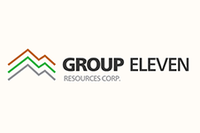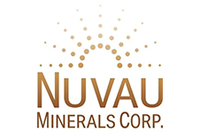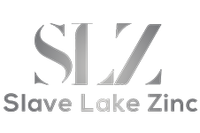Stefan Ioannou: Zinc Price Could Hit an Inflection Point Near Term
Stefan Ioannou, mining analyst at Haywood Securities, discusses the zinc market and what’s been driving the metal’s positive outlook. Encouragingly, he believes zinc could soon be headed for an inflection point.
At the 2015 AME BC Mineral Exploration Roundup, Stefan Ioannou, mining analyst at Haywood Securities, shared his thoughts on the zinc market and gave some insight into what’s been driving the metal’s positive outlook.
While most commodities, including base metals, have been badly beaten up lately, zinc isn’t looking too bad despite being a little flat. And encouragingly, Ioannou suggested that zinc could soon be headed for an inflection point.
For starters, he pointed out that demand is growing. Last year brought global zinc consumption of 14 million tonnes, and demand has grown at a rate of about 4 percent in the space in recent years. While Ioannou admitted that demand from the auto sector could change as alternative coatings for steel start to show more promise, he noted that there could be other sources of demand for the metal, namely, as an addition to fertilizers to boost crop yields.
“What that really means is at the end of the day we need about half a million tonnes or more of zinc coming out of our mines every year … just to meet growing demand globally,” he said.
However, looking at supply, it’s unlikely that demand will be met as there have been “a lot of large mine closures” due to resource depletion in recent years. Also, there are more to come and not enough new production to close the gap. To give a couple of examples, Ioannou pointed to the Brunswick mine, which closed in 2013, and the Century mine in Australia, which is set to close this year.
“The problem is, when we add up that list [of imminent production], it’s simply not large enough to replace what we’re expecting to lose here in the short to medium term,” he said.
So why has the zinc price been “fairly flatlined”? Some suggest that “there are big inventories out there” that are mitigating the supply/demand deficit, according to Ioannou. To some extent he agrees with that point, and admitted that there were about 1.2 million tonnes of the metal on the London Metal Exchange in 2013. However, the analyst argued that that’s changing.
“Inventories have come down and are continuing to go down significantly,” he said. “In the last two years alone they are down about 50 percent.”
Still, some have pointed to periodic spikes in inventory as evidence that the perceived zinc shortage “maybe isn’t quite as real as people would like to argue.” To that, Ioannou said that the frequency of inventory spikes is decreasing and that overall, even with the spikes, the inventory trend is clearly going down.
Furthermore, there’s definitely a consensus from other firms and analysts that zinc is in deficit, according to the analyst. While figures range from 40,000 tonnes (Thomson Reuters GFMS) to 700,000 tonnes (Wood Mackenzie), the message is the same — zinc supply isn’t meeting demand.
Of course, demand could slow, and given the current state of the European economy and worries about slowing growth in China, that certainly seems to be a valid concern. However, similar to Lawrence Roulston’s argument regarding copper demand, Ioannou noted that China’s growth is still very strong in absolute terms — in other words, a slightly lower growth rate on a larger population base still equals very healthy overall growth. And at 44 percent of global demand for zinc, that’s certainly a point of view to consider.
Ioannou also looked at the idea that China might simply ramp up production in the face of a deficit, providing pressure for prices. While it’s certainly possible that China could up its output, the analyst noted that it’s not that simple. Considering how much zinc is needed on the market in the next five years or so (about 3 million tonnes), how much production outside of China is set to come online in the near term (600,000 to 650,000 tonnes) and how much China has been able to ramp up production historically (about 225,000 tonnes per year), he concluded that the country would need to nearly double its historic growth rates in order to keep up with global demand.
“Let’s not kid ourselves — even Chinese mines can’t be turned on overnight,” he said.
Ioannou made a few other points, the most interesting of which was that zinc production equivalent to the output of one Century mine is set to go into fertilizers in coming years. Overall, however, the analyst is definitely positive on the base metal.
In terms of prices, he stated that Haywood is forecasting an average zinc price of $1.10 in 2015; however, next year, the metal could be headed for an inflection point similar to what was experienced in 2007, when zinc quickly rallied to $2.
“We’re definitely on a trajectory to have that inflection point again going forward here … we could see zinc prices respond very, very quickly,” he said. “As we move further ahead into 2016 to 2018 … I think that’s really going to be the potential sweet spot for zinc.”
Securities Disclosure: I, Teresa Matich, hold no direct investment interest in any company mentioned in this article.


